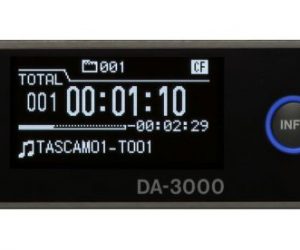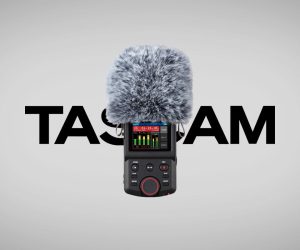
TASCAM MH-8

Bristling with I/O, does this headphone amp have what it takes to step from the low-cost shadows?
Text: Andrew Bencina
Honestly, I’m not a ‘brandist’ but to me all multi-channel headphone amplifiers look the same. To be fair, there are only so many selection and control options you can squeeze onto the front panel of a single rack unit enclosure, and only so many connectors you can cram across the rear. In general, it’s the differences in these design and configuration choices that set each company’s model apart. I’ve even heard some engineers in very expensive studios contend that these are the only meaningful differences – generally by way of explanation for their choice of one of the more ‘affordable’ options.
Tascam’s latest contribution to the field, the MH-8, is more of a mid-priced model, with a recommended retail of $699.
AT FACE VALUE
For a company with such a long heritage in studio and home recording equipment it’s fantastic to find Tascam’s latest products continuing to honour this tradition. The MH-8 is presented in an extremely solid 1U enclosure and the minimalist black and greyscale colour scheme will leave it resting unassumingly in any rack. The unit provides eight channels of headphone amplification, each delivering 250mW of power at 32Ω. This is delivered via eight front-panel TRS connectors, which unlike many of its competitors on the market, are not duplicated on the rear panel. This choice limits the likelihood that you’ll overload each channel through the connection of multiple sets of headphones but also makes the MH-8 better suited to operation within a live room setup.
The rear of the unit is almost exclusively covered in inputs. Importantly, unlike its competitors, the Tascam MH-8 features two master stereo inputs, rather than one. The first of these is served by either of two sets of balanced left and right inputs (XLR and TRS), while the second is fed by either a balanced pair of XLRs or a L/R pair of unbalanced RCAs. The balanced inputs are all calibrated for a nominal input level of +4dBu while the RCAs have been setup specifically for –10dBV consumer level devices. This means an iPod could easily be patched into the system without suffering from a comparative lack of gain to your monitor sends. Both pairs of input channels are fed directly to a pair of what Tascam refers to as TRS ‘Foldback’ outputs for chaining multiple MH-8 units together. The other half of the rear panel is devoted to direct inputs for each of the eight output channels, each comprised of a balanced left and right input pair. This allows the unit to feed a different mix to each individual headphone output.
The front panel will feel very familiar to anyone who has used this type of device before. Each of the two main inputs has a level trim pot on the left-hand side of the unit, while each output channel has its own headphones level control, along with three channel selection buttons for stereo inputs one, two and DIR (Direct). These inputs can be selected concurrently allowing for even further monitor mix control at the unit. A Mono switch is also provided per channel. Both the input channels and the eight output channels also feature signal and overload LED indicators.
IN THE MIX
As often happens with AT, a review item arrives just at the time you’ve been considering an upgrade. On this occasion I’d just upgraded my own headphone monitoring system and had a range of new and old options in the studio for comparison. I was also able to try out a number of studio and consumer headphones (AKG K271S, Beyerdynamic DT770 Pro, Philips HP890, and TDK STPro300) in conjunction with the MH-8. Overall the results were consistent. The MH-8 provided plenty of level, with the character of tone biased towards the midrange. When switching to the other high-powered alternatives I found the image stepped back from crowding the cans and a significant amount of depth and detail was revealed. While the character of the MH-8 could be used to assist guitarists and drummers monitoring a band performance it arguably falls short in other applications. My older and more affordable unit performed extremely well in comparison with most headphones on trial, but it should be noted that with the 250Ω Beyerdynamics the MH-8 faired far better. As often is the case, it’s the combination of tools that brings best results and choosing the right headphone amp goes hand in hand with choosing an appropriate set of headphones.
The multi-channel headphone amplifier seems to be a compulsory item on every studio inventory, no matter how small. They’re unfortunately also the utility most consistently skimped on. At its price point, the Tascam MH-8 is a step up for many people, located somewhere between the bargain beginnings and more flexible and expensive monitoring systems few ever invest in. While its extensive input options set it apart from some of the competition its performance still wrestles with the pack. You’re unlikely to select the MH-8 as your only headphone amplifier so the fundamental question will be whether or not its connectivity and configuration directly matches your specific needs.
















RESPONSES